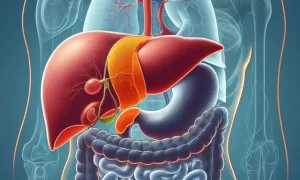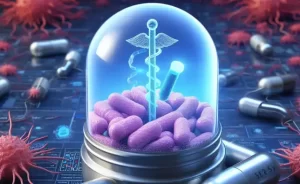First model that simulates human embryonic development helps women to reproduce freely
- Normal Liver Cells Found to Promote Cancer Metastasis to the Liver
- Nearly 80% Complete Remission: Breakthrough in ADC Anti-Tumor Treatment
- Vaccination Against Common Diseases May Prevent Dementia!
- New Alzheimer’s Disease (AD) Diagnosis and Staging Criteria
- Breakthrough in Alzheimer’s Disease: New Nasal Spray Halts Cognitive Decline by Targeting Toxic Protein
- Can the Tap Water at the Paris Olympics be Drunk Directly?
First model that simulates human embryonic development helps women to reproduce freely
- Should China be held legally responsible for the US’s $18 trillion COVID losses?
- CT Radiation Exposure Linked to Blood Cancer in Children and Adolescents
- FDA has mandated a top-level black box warning for all marketed CAR-T therapies
- Can people with high blood pressure eat peanuts?
- What is the difference between dopamine and dobutamine?
- How long can the patient live after heart stent surgery?
Nature Breakthrough: The First model that simulates human embryonic development helps women to reproduce freely.
Within a week after fertilization, a human embryo will form a cell mass called a blastocyst , and the blastocyst will implant in the wall of the uterus.
Models that accurately simulate this stage of development may support research on embryo implantation and early development.
Construction of analogs blastocyst using stem cells is a promising approach, but previous attempts bottlenecks encountered, such as a fine and will not match the blastocyst cells.
On December 2, 2021, the research team of the Institute of Molecular Biotechnology of the Austrian Academy of Sciences published a research paper titled: Human blastoids model blastocyst development and implantation in journal Nature .
This study established a simulation of early human embryos for human embryoid bodies (blastoid) , team these embryoid bodies culture of up to 13 days, at which time they already contains about 300 cells, these embryoid accurate physical Reproduce the key stages of the early development of human embryos, including adhesion to uterine cells in vitro, so as to study the process of human embryo implantation in the uterus.
This model may help advance our understanding of the early stages of human development, as well as the development of infertility treatments or contraceptives .

If the development process of human embryos in the uterus can be reproduced in a petri dish, it will open up new ways for improving in vitro fertilization and developing better contraceptive methods .
Hormonal contraceptives are widely used and effective for many women. However, they have unpleasant side effects.
Some people experience dizziness, headache, fatigue, lethargy, loss of appetite and other symptoms.
If it is not taken every day as required, it will also cause the contraceptive effect to decrease.
In addition, some women, such as breast cancer patients, cannot use this hormonal contraceptive.
The research team said that this study used cell models of early human embryos and found molecules that can be candidates for contraceptives or birth-enhancing agents, making family planning easier, more convenient, and more adaptable to current social challenges.
The research team used human pluripotent stem cells to construct a human blastocyst-like structure (embryoform) .
The author identified three signaling pathways, Hippo , TGF-β, and ERK .
By inhibiting them , embryoid bodies that can effectively simulate normal blastocyst development (success rate>70%) and form correct cells (success rate>97%) can be obtained .

Human embryoid bodies in culture
This human embryoid body can specifically adhere to hormone-stimulated endometrial cells in vitro, allowing the author to reproduce the peri-implantation development process until the 13th day.
Due to the high efficiency and scalability of the model, the authors believe that this method can open important possibilities for human embryo implantation and development research.

Fluorescently labeled human embryoid bodies
More importantly, the study also found that SC144, a small molecule that has been approved by the FDA, can hinder the implantation of embryos.
This drug can be used as a contraceptive only when necessary, as opposed to hormonal contraceptives that require daily medication.
In comparison, it can significantly reduce potential side effects, which points the way for the development of a new generation of non-hormonal contraceptives.
The study also found that the natural molecule LPA can promote the formation of natural embryos during in vitro fertilization, which points out the direction for improving in vitro fertilization and increasing the success rate of IVF.
Paper link:
https://www.nature.com/articles/s41586-021-04267-8
First model that simulates human embryonic development helps women to reproduce freely
(source:internet, reference only)
Disclaimer of medicaltrend.org
Important Note: The information provided is for informational purposes only and should not be considered as medical advice.



